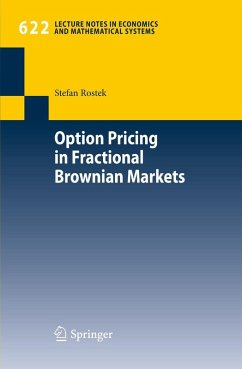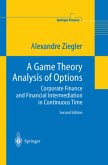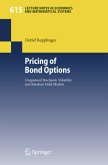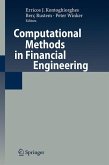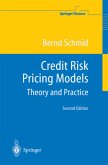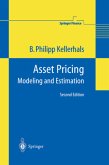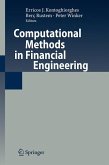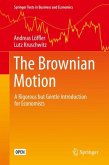The scientific debate of recent years about option pricing with respect to fractional Brownian motion was focused on the feasibility of the no arbitrage pricing approach. As the unrestricted fractional market setting allows for arbitrage, the conventional reasoning is that fractional Brownian motion does not qualify for modeling price process.
In this book, the author points out that arbitrage can only be excluded in case that market prices move at least slightly faster than any market participant can react. He clarifies that continuous tradability always eliminates the risk of the fractional price process, irrespective of the interpretation of the stochastic integral as an integral of Stratonovich or Itô type.
Being left with an incomplete market setting, the author shows that option valuation with respect to fractional Brownian motion may be solved by applying a risk preference based approach. The latter provides us with an intuitive closed-form solution for European options within the fractional context.
Mandelbrot and van Ness (1968) suggested fractional Brownian motion as a parsimonious model for the dynamics of ?nancial price data, which allows for dependence between returns over time. Starting with Rogers(1997) there is an ongoing dispute on the proper usage of fractional Brownian motion in option pricing theory. Problems arise because fractional Brownian motion is not a semimartingale and therefore "no arbitrage pricing" cannot be applied. While this is consensus, the consequences are not as clear. The orthodox interpretation is simply that fractional Brownian motion is an inadequate candidate for a price process. However, as shown by Cheridito (2003) any theoretical arbitrage opportunities disappear by assuming that market p- ticipants cannot react instantaneously. This is the point of departure of Rostek's dissertation. He contributes to this research in several respects: (i) He delivers a thorough introduction to fr- tional integration calculus and uses the binomial approximation of fractional Brownianmotion to give the reader a ?rst idea of this special market setting.
In this book, the author points out that arbitrage can only be excluded in case that market prices move at least slightly faster than any market participant can react. He clarifies that continuous tradability always eliminates the risk of the fractional price process, irrespective of the interpretation of the stochastic integral as an integral of Stratonovich or Itô type.
Being left with an incomplete market setting, the author shows that option valuation with respect to fractional Brownian motion may be solved by applying a risk preference based approach. The latter provides us with an intuitive closed-form solution for European options within the fractional context.
Mandelbrot and van Ness (1968) suggested fractional Brownian motion as a parsimonious model for the dynamics of ?nancial price data, which allows for dependence between returns over time. Starting with Rogers(1997) there is an ongoing dispute on the proper usage of fractional Brownian motion in option pricing theory. Problems arise because fractional Brownian motion is not a semimartingale and therefore "no arbitrage pricing" cannot be applied. While this is consensus, the consequences are not as clear. The orthodox interpretation is simply that fractional Brownian motion is an inadequate candidate for a price process. However, as shown by Cheridito (2003) any theoretical arbitrage opportunities disappear by assuming that market p- ticipants cannot react instantaneously. This is the point of departure of Rostek's dissertation. He contributes to this research in several respects: (i) He delivers a thorough introduction to fr- tional integration calculus and uses the binomial approximation of fractional Brownianmotion to give the reader a ?rst idea of this special market setting.

